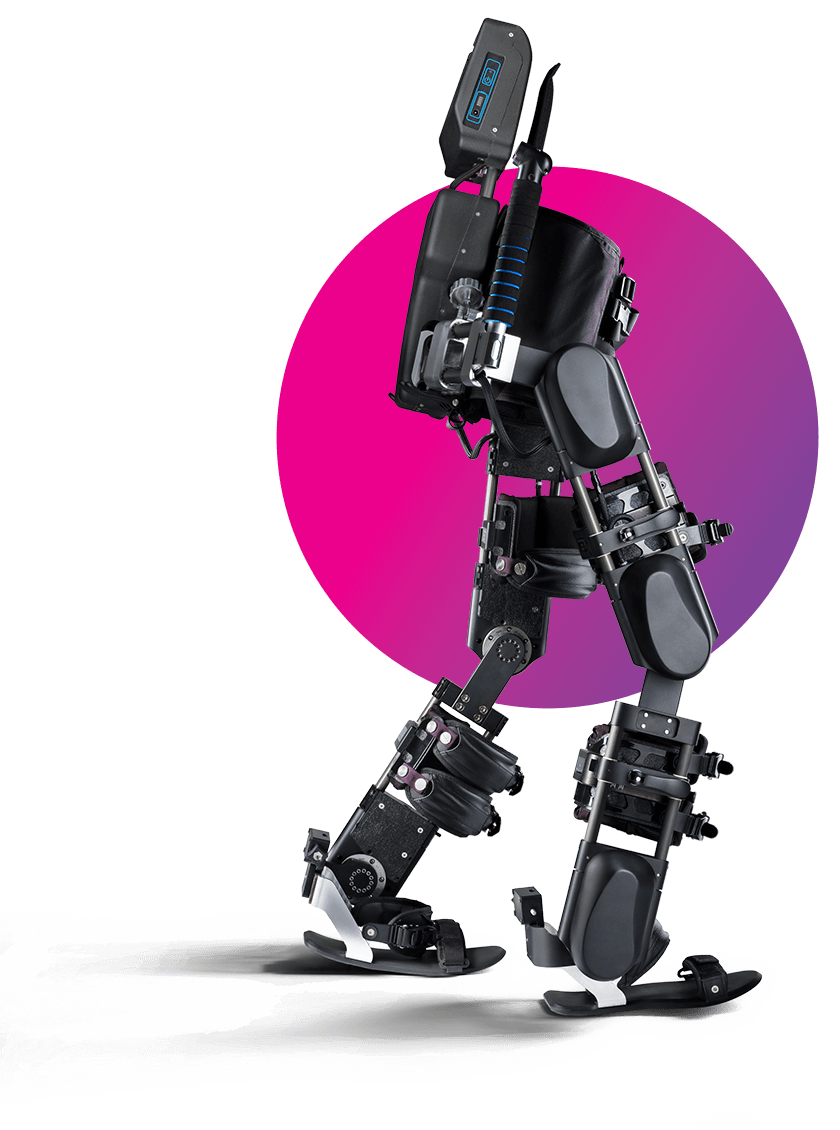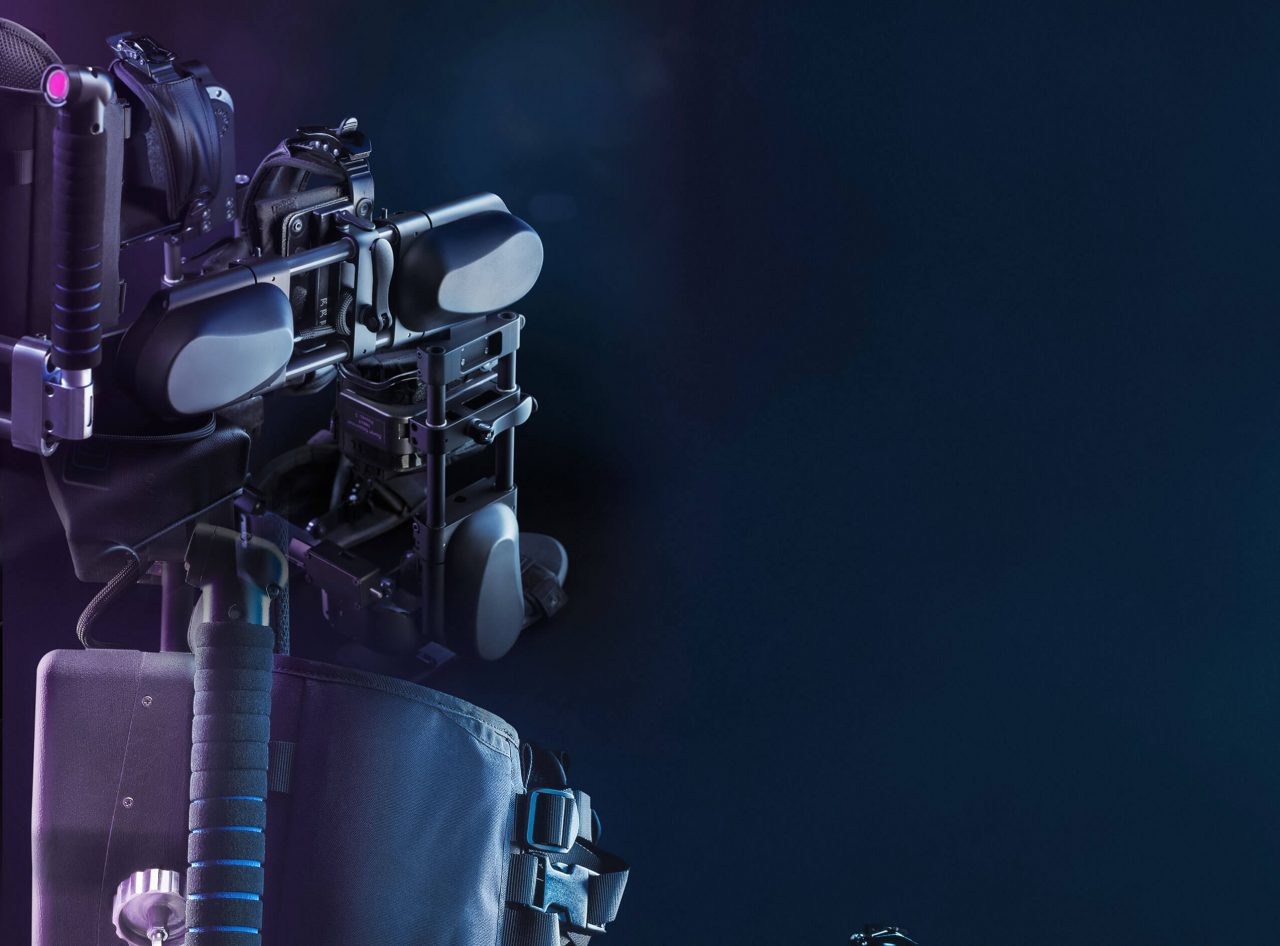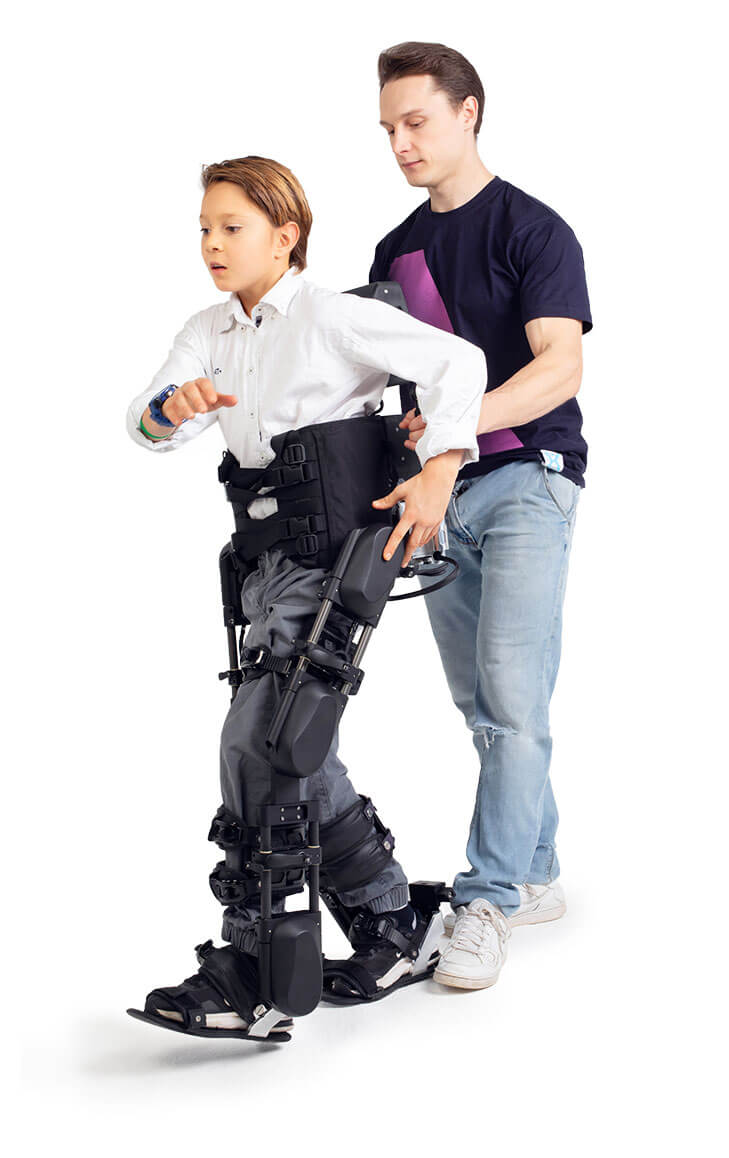
ExoAtlet I
is an exoskeleton for research and early mobility for patients with locomotor disorders.
Since 2017 we have been supporting more than 25 clinical research projects with such nosologies as spinal cord injury, cerebral palsy, stroke, multiple sclerosis, traumatic brain injury and athropalthy in different clinics worldwide.
In 2019 several American and European projects have started working on an exoskeleton controlled by the user’s brain that also utilizes virtual reality, tactile and thermal feedback
Key characteristics
- Ergonomic handles on the back for physical therapist, can be controlled via remote control on a crutch by the pilot or a tablet by the assistant;
- 8 walking patterns (pace length/height);
- 3 walking speeds;
- going up and down stairs;
- auditory cues for each step;
- tolerance to uneven surfaces;
- up to 7 hours of continuous work;
- cloud service used to store training data and plan sessions;
- rigid back for pilots with high injury levels;
- spasticity protection unit;
- exoskeletons weight up to 25 kg
- no external cables.

For patients:
Height from
160 cm to 190 cm.
Weight up to 100 kg.
EXOATLET
